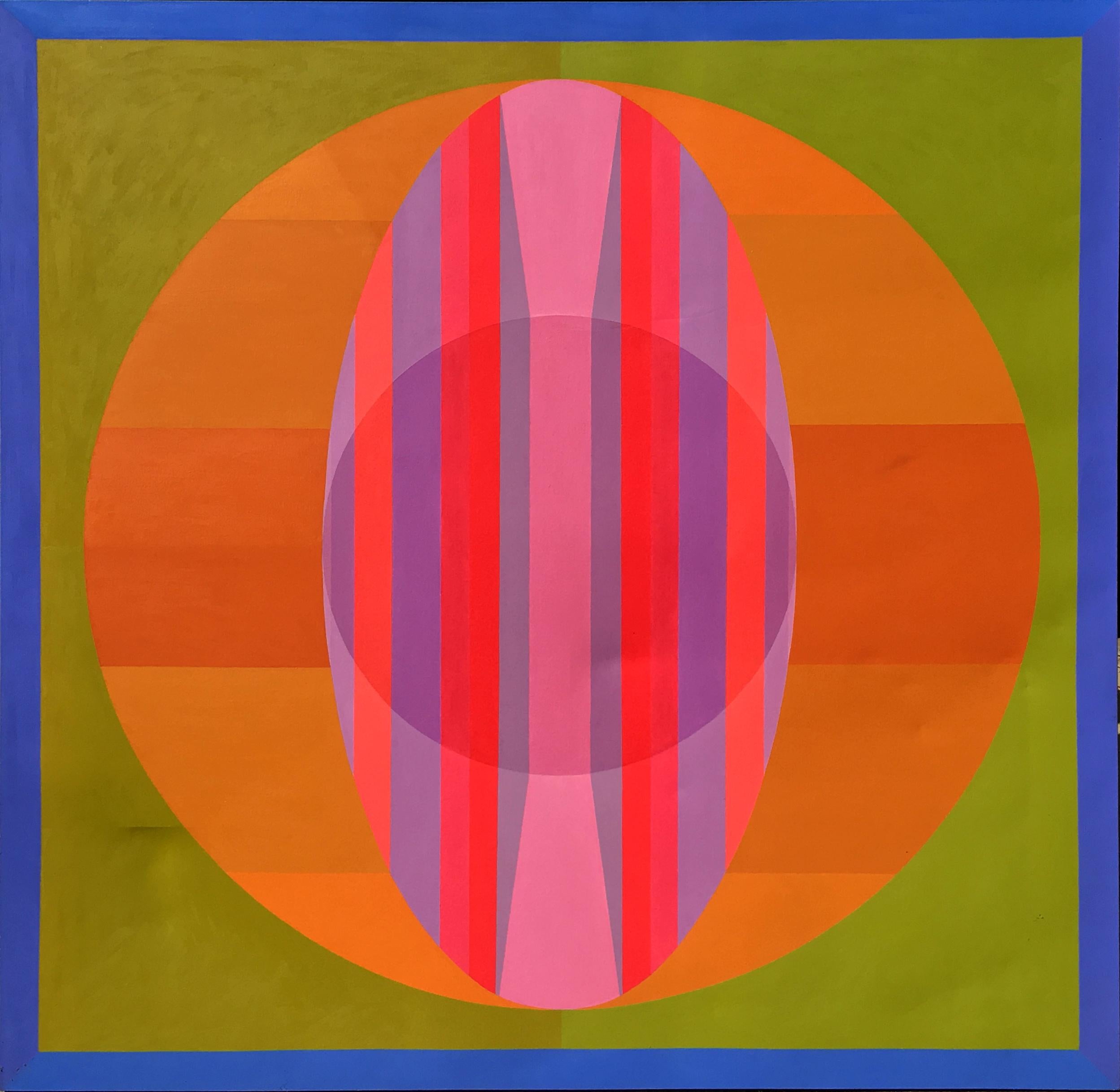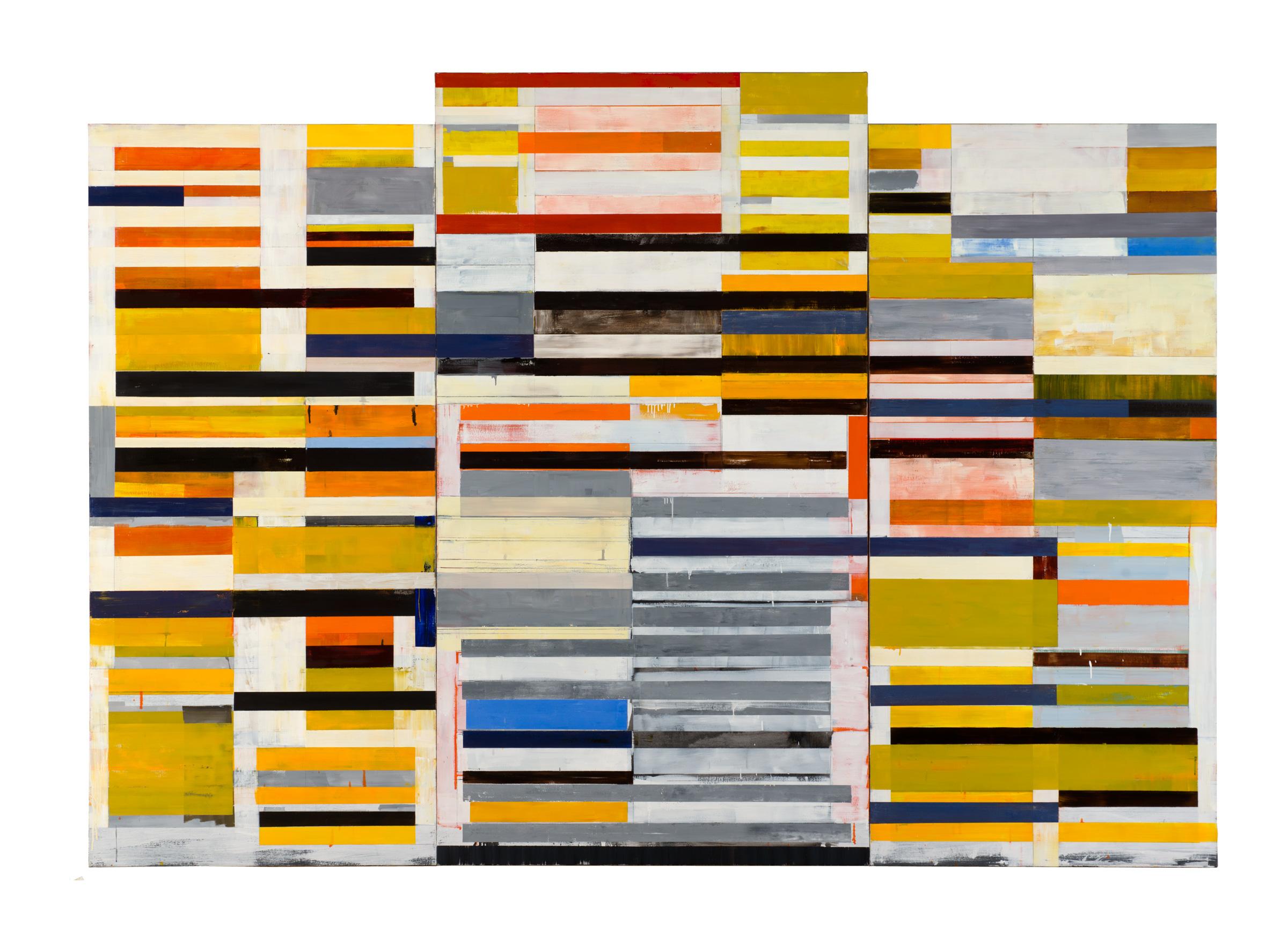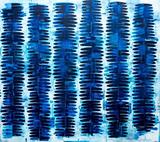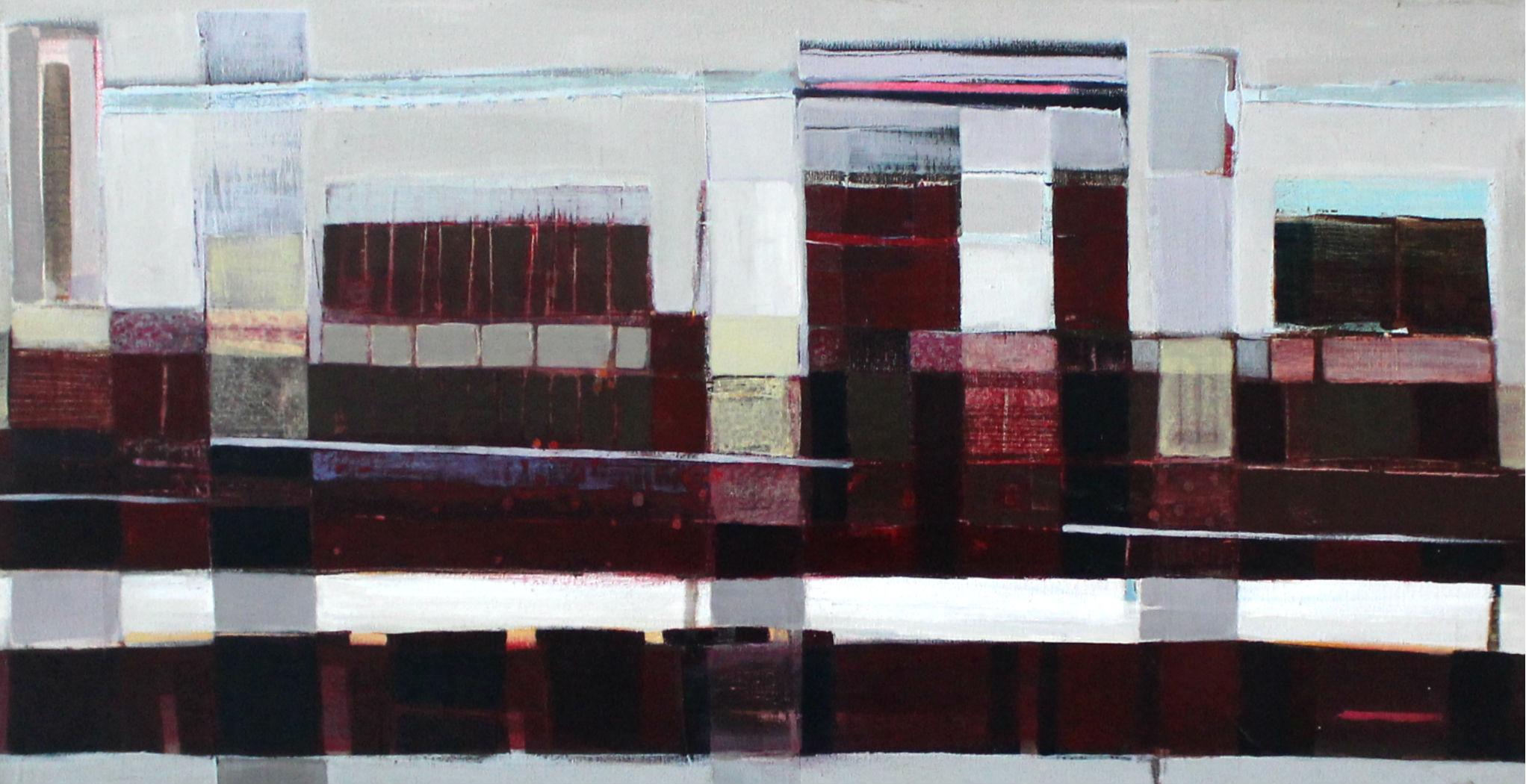Items Similar to VENUS I by Auguste Herbin - Abstract, geometric painting
Want more images or videos?
Request additional images or videos from the seller
Auguste HerbinVENUS I by Auguste Herbin - Abstract, geometric painting1945
1945
About the Item
VENUS I by Auguste Herbin (1882-1960)
Oil on canvas
100 x 81 cm (39 ³/₈ x 31 ⁷/₈ inches)
Signed and dated lower left, herbin 1945
Provenance: Private collection, Stockholm
Galerie des Etats-Unis, S.Stoliar, Cannes
Sotheby's London, 2002
Dorval Gallery, Lille
Private collection, France
Literature: Geneviève Claisse, Herbin, Catalogue Raisonné de l'Œuvre Peint, Paris, 1993, no. 846, (illustrated in black and white p. 429)
Exhibition: Cannes, Galerie des Etats-Unis, 1965, no. 29
Artist biography:
Auguste Herbin was a French Cubist and later abstract painter, celebrated as a pioneer of non-figurative, 'radical geometric' abstraction in France while also associated with movements including Orphism, Purism and New Objectivity.
Born in Quiévy, a small village near the Belgian border, Herbin was the son of a workman. He attended the Ecole des Beaux Arts in Lille where he produced post-Impressionist works from 1898 to 1901, before moving to Paris and working in isolation for several years. After visiting exhibitions of Vincent Van Gogh, Paul Gauguin and Georges Seurat, he joined the Fauvist movement.
Gradually, Herbin turned to Cubism. Encouraging this transition was Cézanne's 1907 retrospective at Salon d’Automne and a move in 1909 to the Bateau Lavoir, where his studio was in close proximity to those of Pablo Picasso and Juan Gris. Though his first Cubist works appear in 1913, Herbin’s first one-man exhibition was at the Galerie Clovis Sagot, Paris in 1912.
From 1917 to 1921, Herbin moved to "an ornate phase of Cubism akin to folk art". This work contrasted from that of 1922 to 1925, when he reverted to a more figurative style (a tendency echoed in the oeuvres of Fernand Léger and Picasso during the post-war era). Herbin then settled back into abstraction in 1926, applying himself to organic, often spiral-like forms, before once again pursuing 'pure' geometric abstraction.
Herbin co-founded the Salon des Surindépendants in 1929. Two years later, along with Georges Vantongerloo, Theo van Doesburg, Jean Hélion, Hans Arp and František Kupka, he founded the artist association Abstraction-Création which strove to combine various non-figurative styles. Herbin and Vantongerloo published five issues of an eponymous journal between 1932 and 1936.
From 1938, Herbin's interest in the Italian Trecento led him to more concrete, strictly two-dimensional painting and simple geometric forms. After the Second World War, the artist was co-founder and vice president (also president from 1955) of the Salon des Réalites Nouvelles.
Herbin developed a compositional system called "alphabet plastique", based on the structure of letters, in 1946. This geometric vocabulary of coloured shapes partly derived from Goethe's Farbenlehre or Theory of Colors as well as Rudolf Steiner's anthroposophical writings. It was based on Herbin's conviction that synaesthetic parallels exist between letters, musical sounds, colours and forms, such that words and tones can be expressed in painting. According to his "alphabet plastique", for example, the letter C is dark red, has the form of a circle or square and corresponds to the solfège syllables "do" and "so". For his work during this period (Vierge, Homme et Femme, Foetus, Guerre et Paix and Abri, e.g.) Herbin interpreted terms and expressions loaded with meaning. In 1949, he published his system of "alphabet plastique" as well as colour theories in L'art non-figuratif non-objectif, which took on great significance for a younger generation of artists.
During the 1950s, Herbin was an active designer of tapestries. A lateral paralysis in 1953 forced him to learn painting with his left hand.
Herbin died in Paris at the end of January, 1960. One painting, Fin, remained unfinished.
Herbin’s architectural approach and colour effects have made his pre- and post-war work extensively known in the international art world. Between 1955 to 1972, his work was exhibited at documenta I, II, V and VI (in the last programme, Harald Szeemann put it in the category of Individual Mythologies). Herbin was represented at the Guggenheim Museum, New York in 1979 and in the exhibition Positionen unabhängiger Kunst in Europa um 1937 at the Kunstsammlung Nordrhein-Westfalen in Düsseldorf in 1987. A retrospective at the Museum Haus Konstruktiv was held in 2014.
- Creator:Auguste Herbin (1882-1960, French)
- Creation Year:1945
- Dimensions:Height: 39.38 in (100 cm)Width: 31.89 in (81 cm)
- Medium:
- Movement & Style:
- Period:
- Condition:
- Gallery Location:London, GB
- Reference Number:1stDibs: LU261212871402
About the Seller
5.0
Recognized Seller
These prestigious sellers are industry leaders and represent the highest echelon for item quality and design.
Platinum Seller
These expertly vetted sellers are 1stDibs' most experienced sellers and are rated highest by our customers.
Established in 1964
1stDibs seller since 2015
95 sales on 1stDibs
Typical response time: 8 hours
Associations
Society Of London Art Dealers
- ShippingRetrieving quote...Ships From: London, United Kingdom
- Return PolicyA return for this item may be initiated within 7 days of delivery.
More From This SellerView All
- Red Composition by TOSHIMITSU ÏMAI - Contemporary, Abstract, Oil on canvasBy Toshimitsu ImaiLocated in London, GB*PLEASE NOTE UK BUYERS WILL ONLY PAY 5% VAT ON THIS PURCHASE. Red Composition by TOSHIMITSU ÏMAI (1928-2002) Oil on canvas 80.2 x 55.3 (31 ⅝ x 21 ¾ inches) Signed, TOSHIMITSU IMAÏ, dated, 1963 Paris and inscribed in Japanese on the reverse Provenance Private collection, USA Born in Kyoto, Japan in 1928 Imai was part of the 20th century Japanese avant-garde. He began his formal education at the Tokyo State Art Academy where he took up painting. His early works are characterised by colourful abstractions, reminiscent of Favuism. In 1951 Imai was awarded the Kansai-Shinseisaku Prize and in 1952 the prize for the best new artist at the 15th Shinseisaku Salon. Imai relocated to Paris in 1953, the same and subsequent year he exhibited at the Salon de L’Art Sacré. Meanwhile, he attended the Académie de la Grande Chaumière and the Sorbonne to read medieval history and philosophy. In 1955, Imai completely abandoned representational art in favour of abstraction. After meeting the art critic Michel Tapié via the artist Sam Francis, Imai was the first Japanese artist to join the Art Informel movement. In 1956 Imai was called upon by the Japanese artist Taro Okamoto to curate an exhibition entitled The World: Today’s Art in Tokyo. Artists such as Jean Dubuffet, Jean Fautrier, Lucio Fontana, and Karel Appel gained important exposure in Japan. It was also in 1957, when Imai arranged for Tapié and the artists Georges Mathieu and Sam Francis to travel to Japan, that a connection between Art Informel and Gutai occurred. The Ashiya-based Gutai Art Association formed in 1954 was proclaimed a kindred spirit by Tapié which he subsequently promoted internationally. Founding members included Yoshihara Jiro, Kanayma Akira, Murakami Saburo, Shiraga Kazuo and Shozo Shimamoto...Category
1960s Abstract Expressionist Abstract Paintings
MaterialsCanvas, Oil
- Soleil Fendu by TOSHIMITSU ÏMAI - Abstract, Oil painting, Art Informel MovementBy Toshimitsu ImaiLocated in London, GBSoleil Fendu by TOSHIMITSU ÏMAI (1928-2002) Oil on canvas 73 x 60 cm (28 ³/₄x 23 ⅝ inches) Signed TOSHIMITSU IMAÏ, dated 1963 Paris and inscribed in Japanese on the reverse Provenance Private collection, Japan A wonderful piece from his most important Paris perdiod. Artist Biography Born in Kyoto, Japan in 1928 Imai was part of the 20th-century Japanese avant-garde. He began his formal education at the Tokyo State Art Academy where he took up painting. His early works are characterised by colourful abstractions, reminiscent of Fauvism. In 1951 Imai was awarded the Kansai-Shinseisaku Prize and in 1952 the prize for the best new artist at the 15th Shinseisaku Salon. Imai relocated to Paris in 1953, the same and subsequent year he exhibited at the Salon de L’Art Sacré. Meanwhile, he attended the Académie de la Grande Chaumière and the Sorbonne to read medieval history and philosophy. In 1955, Imai completely abandoned representational art in favour of abstraction. After meeting the art critic Michel Tapié via the artist Sam Francis, Imai was the first Japanese artist to join the Art Informel movement. In 1956 Imai was called upon by the Japanese artist Taro Okamoto to curate an exhibition entitled The World: Today’s Art in Tokyo. Artists such as Jean Dubuffet, Jean Fautrier, Lucio Fontana, and Karel Appel gained important exposure in Japan. It was also in 1957 when Imai arranged for Tapié and the artists Georges Mathieu and Sam Francis to travel to Japan, that a connection between Art Informel and Gutai occurred. The Ashiya-based Gutai Art Association formed in 1954 was proclaimed a kindred spirit by Tapié which he subsequently promoted internationally. Founding members included Yoshihara Jiro, Kanayma Akira, Murakami Saburo, Shiraga Kazuo and Shozo...Category
1960s Abstract Abstract Paintings
MaterialsCanvas, Oil
- Phenomena like Byron by PAUL JENKINS - Abstract Expressionist, colourBy Paul JenkinsLocated in London, GBPhenomena like Byron by PAUL JENKINS (1923-2012) Oil on canvas 74 x 60 cm (29¹/₈ x 23⁵/₈ inches) Signed lower left, Paul Jenkins Signed, titled and dated on the reverse and on the stretcher Executed in 1990, Saint Paul Provenance Waterhouse & Dodd Fine Art, London/New York Private collection, Europe, acquired from the above in 2012 Private collection, Austria Artist biography Born in Kansas City, the multi-media artist, poet and playwright Paul Jenkins began his studies at Kansas City Art Institute and the Art Students League in New York City. After his discharge from military service at the end of February 1946, he briefly studied playwriting with dramatist George McCalmon at the Carnegie Institute of Technology in Pittsburgh. Thereafter, Jenkins spent four years studying with Japanese American artist Yasuo Kuniyoshi in New York City. His first solo exhibitions were held at Studio Paul Facchetti in Paris in 1954 and the Martha Graham Gallery in New York City in 1956. Over the past thirty years, numerous retrospectives have been curated across the globe and Jenkins’ work can found in national collections from Europe and the United States to Israel, Australia and Japan. The diversity of Jenkins’ work springs from a wealth of eclectic influences. Some of his earliest works included what he called "interior landscapes", influenced by ancient natural forms. Frequent student visits to the Frick Collection in New York fostered a love of the great masters, and lingering student visits to the renowned Eastern collection of the Nelson-Atkins Museum of Art in Kansas City evoked powerful sympathy for a monumental Chinese fresco...Category
20th Century Abstract Expressionist Paintings
MaterialsCanvas, Oil
- Memories by Lélia Pissarro, 2013 - Oil on Canvas PaintingBy Lelia PissarroLocated in London, GBMemories by Lélia Pissarro (B. 1963) Oil on canvas 120 x 60 cm (47 ¹/₄ x 23 ⁵/₈ inches) Signed lower right, Lélia Pissarro Signed, titled and dated May 2013 on the reverse Executed i...Category
21st Century and Contemporary Abstract Abstract Paintings
MaterialsCanvas, Oil
- Rhino sauvage sous la pluie, ta force mataille by Lélia Pissarro - ContemporaryBy Lelia PissarroLocated in London, GBRhino sauvage sous la pluie, ta force mataille by Lélia Pissarro (b. 1963) Acrylic, oil and resin on canvas 146 x 114 cm (57 ¹/₂ x 44 ⁷/₈ inches) Signed lower left, Lélia Pissarro Si...Category
21st Century and Contemporary Abstract Abstract Paintings
MaterialsCanvas, Resin, Oil, Acrylic
- Roger Howard at Ladywood by Lélia Pissarro -Contemporary abstract painting, 2021By Lelia PissarroLocated in London, GBRoger Howard at Ladywood by Lélia Pissarro (b. 1963) Acrylic, oil and gold powder on canvas 100 x 100 cm (39 ³/₈ x 39 ³/₈ inches) Signed lower left, Lélia Pissarro Executed in 2021 ...Category
21st Century and Contemporary Abstract Abstract Paintings
MaterialsCanvas, Oil, Acrylic
You May Also Like
- Sonata 23 TriptychBy Osvaldo MariscottiLocated in New York, NYSonata 23 Triptych 2017 Oil on canvas (3 panels) 48 x 120 x 1 1/2 inches, overall Signed and dated, versoCategory
2010s Abstract Geometric Abstract Paintings
MaterialsCanvas, Oil
- Vibrations of the InteriorBy Gloriane HarrisLocated in Santa Monica, CAOil on canvas.Category
1970s Abstract Geometric Abstract Paintings
MaterialsCanvas, Oil
- Large Alloy, Oil on Canvas, 2013By Lloyd MartinLocated in Boston, MAArtist: Lloyd Martin Title: Large Alloy Size: 92 x 130” Year: 2013 American artist Lloyd Martin, known internationally for his rhythmically constructed abstract painting, continues ...Category
21st Century and Contemporary Abstract Geometric Abstract Paintings
MaterialsCanvas, Oil
- Totem/CyanideBy John BelingheriLocated in Fairfield, CTJOHN BELINGHERI Artist Statement "Thoughts are patterns that bounce back and forth expressing the vacillating dialogue in my thinking, they become a constant conversation in my he...Category
Abstract Geometric Abstract Paintings
MaterialsCanvas, Oil
- Totem/TarBy John BelingheriLocated in Fairfield, CTRepresented by George Billis Gallery, NYC & LA -- JOHN BELINGHERI Artist Statement "Thoughts are patterns that bounce back and forth expressing the vacillating dialogue in my think...Category
21st Century and Contemporary Abstract Geometric Abstract Paintings
MaterialsCanvas, Oil
- Crimson Composition - Abstraction IV - XXI Century Abstract Painting, Bright RedBy Iwona DelińskaLocated in Warsaw, PLIWONA DELIŃSKA (born in 1963) She studied interior design and painting at the Academy of Fine Arts. She received her diploma in 1992. For many years she was desigining clothes, espec...Category
21st Century and Contemporary Abstract Geometric Abstract Paintings
MaterialsCanvas, Oil
Recently Viewed
View AllMore Ways To Browse
Small Ornate Frame
Jean Herbin
Musical Stein
Pre 1940 Paintings
Theo Arts
Letter Of The Alphabet L
Picasso Two Man
Gauguin Tapestry
Geometric Art Gold Frame
Marion Tucker
Maine Wall Light Gallery L7
School House Glass Shades
1986 Abstract On Paper
Jasper 52
Gaetan De Paris
De Hirsh Margules
Kelly Wearstler Head
Steven Mcloughlin





